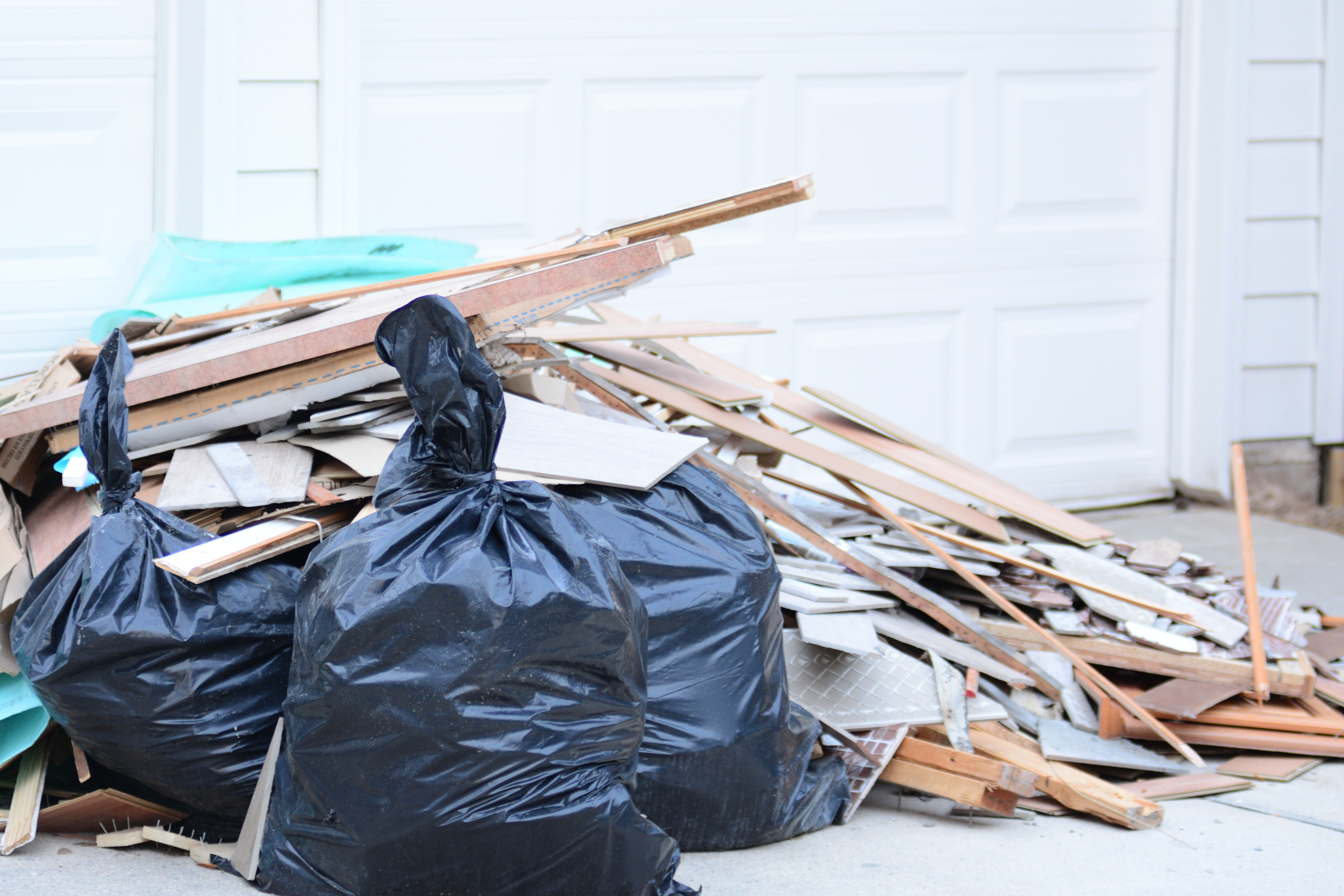Introduction
Learn effective construction waste management strategies, from proper segregation to sustainable disposal. Discover practical tips for reducing, reusing, and recycling construction materials.
Unlike a football field, a construction site is messy and dangerous - you could trip on scraps of drywall, and over time, your clean site can become filled with trash. Whether you're demolishing, building, or renovating, handling construction waste responsibly is key to staying efficient, eco-friendly, and legally compliant. Let's explore the essentials of waste management on construction sites.
1. Know Your Waste

Before attacking construction waste, you need to know what you’re dealing with. Spoiler: It’s not just “trash.” Construction waste comes in all shapes, sizes, and temperaments.
Common Categories:
• Concrete and Masonry: Concrete and masonry waste—often generated in heavy volumes during construction and demolition—can be a serious issue due to its sheer bulk and weight. But the advantage with this type of waste is that it offers us a huge recycling potential. Crushed concrete can be reused as aggregate for road bases, streets, or even new construction projects. Masonry waste, such as bricks and tiles, can also be salvaged for reuse or crushed for landscaping applications.
• Wood Scraps: Wood scraps—a common byproduct of construction and renovation—are useful if managed wisely. Offcuts, broken pallets, or surplus planks can be reused on-site as temporary supports, braces, or for landscaping. Larger pieces can be repurposed for furniture or future projects. Wood waste can be recycled into particleboard or biomass fuel.
Proper sorting by size and type, while avoiding contamination with paint or adhesives, helps maximize its value.
• Metals: Metals found in construction waste are usually steel, aluminium, or copper. These are among the easiest materials to recycle and reuse. Scrap metal can be melted down and reused in everything from new construction projects to manufacturing. Steel rebar, pipes, and beams can often be salvaged directly for reuse, reducing both waste and costs. Copper wiring and aluminium components, being highly valuable, are sought after by recycling facilities.
For best results, separate metals from other debris and avoid contamination with non-recyclable materials.
• Plastics: Plastics in construction waste range from packaging materials to PVC pipes and often collect quickly. Many plastics, like polyethylene and polypropylene, can be recycled into new products such as decking, insulation, or piping.
On-site sorting by plastic type is essential, as mixed plastics are more challenging to process. Consider reusing plastic sheeting or containers for temporary covers or storage, and partner with suppliers who use eco-friendly packaging.
• Hazardous Materials: Managing hazardous waste on a construction site requires careful planning and adherence to safety regulations. Materials like asbestos, lead paint, solvents, and construction chemicals must be properly identified and segregated from regular waste. They should be stored in secure, labelled containers, away from sources of heat or moisture, and handled by trained personnel. Additionally, construction companies must ensure compliance with local environmental regulations and arrange for the safe transportation and disposal of hazardous materials at certified facilities.
2. Reduce, Reuse, Recycle: The Holy Trinity of Waste Management

Construction waste isn’t all destined for the landfill. With a little creativity and effort, you can minimize waste and even save money.
Reduce:
• Plan Efficiently: Order only what you need. You really don’t need those extra bricks stacking up outside your newly built house.
• Choose Modular Designs: Prefabricated components reduce waste and save time.
Reuse:
• Salvage Materials: That old door or window frame can be of interest to someone following you on your Insta account.
• On-Site Innovations: Wood scraps can become temporary braces or formwork.
Recycle:
• Separate Materials: Dedicated bins for metal, wood, and plastics make recycling easier.
• Partner with Recycling Facilities: They’ll handle the dirty work (literally).
3. Smart Disposal: Play by the Rules

Disposing of construction waste isn’t as simple as tossing it in a dumpster. Here’s how to do it right:
Understand Local Regulations:
• Every city has its own rules. Check them before your waste heap grows into a mountain.
• Hazardous materials often require permits or special handling.
Rent a Dumpster (or Two):
• Choose appropriately sized bins for different waste types. Mixing waste is a big no-no.
• Keep the area around the bins clean to avoid complaints from others.
Hire Professionals:
• Waste removal companies can save time and ensure compliance.
4. Make It Eco-Friendly: Save the Planet

Sustainability is more than just a slogan - it’s a responsibility. Here’s how to go green with your construction waste:
• Choose Recycled Materials: From reclaimed wood to recycled concrete, give old materials a new lease of life.
• Compost Organic Waste: Instead of sending them to the landfills, use wood chips and sawdust to enrich soil.
• Deconstruction Over Demolition: Carefully dismantling structures allows materials to be reused instead of destroyed.
5. Create a Waste Management Plan (Because Chaos Is Not a Strategy)

A little planning goes a long way. Draft a waste management plan before starting the project.
Include:
• Inventory of Materials: Know what you’ll use and what you’ll waste.
• Sorting Stations: Clearly labelled bins for wood, metal, plastics, and general waste.
• Assigned Responsibilities: Get someone to oversee proper handling.
In conclusion
Managing construction waste is about building smarter, cleaner, and more sustainably. Handling waste responsibly ensures a smoother process and a happier earth. So, roll up your sleeves, sort those scraps, and get to work—because even the most beautiful structures start with a clean foundation.
Related articles
Sign up for the newsletter
If you want relevant updates occasionally, sign up for the private newsletter. Your email is never shared.

















